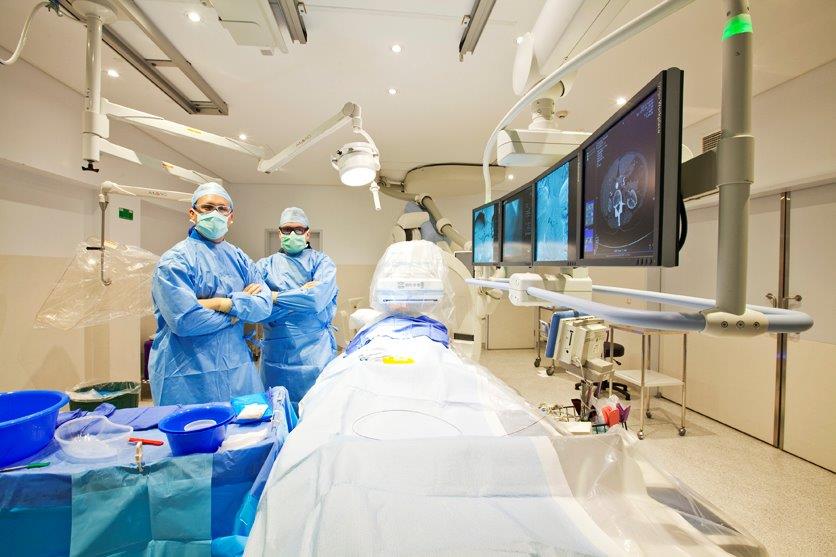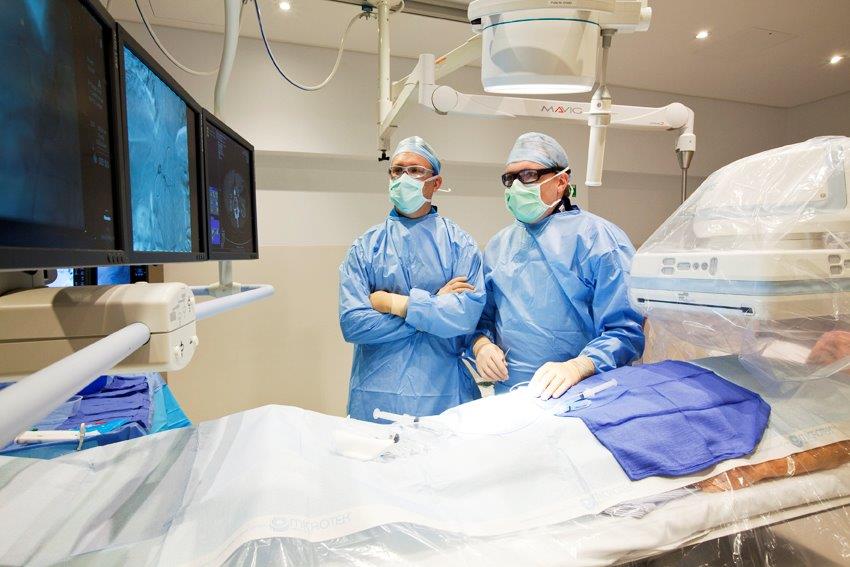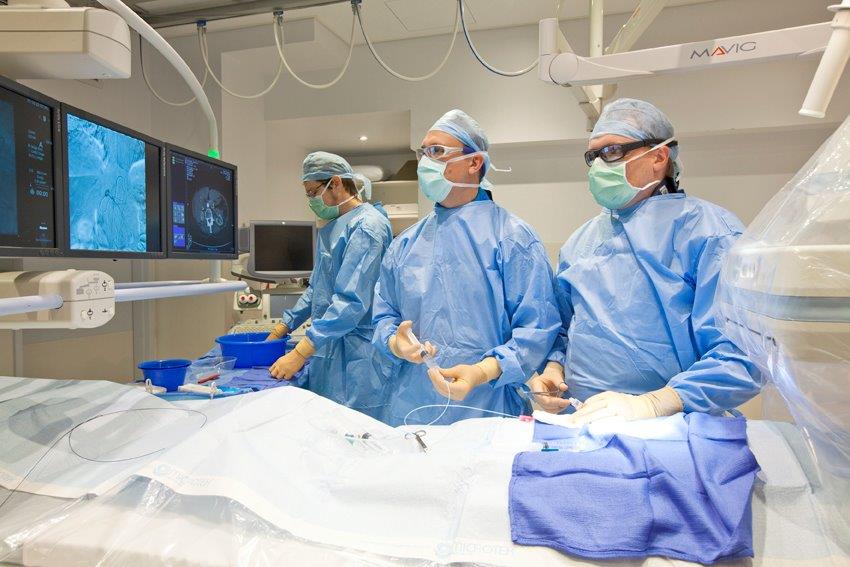
What is Acute DVT management?
Deep vein thrombosis (DVT) occurs when blood clot forms in the deep veins, relatively far from the skin surface. This can occur in any vein, but most commonly in the legs. A leg DVT can be anywhere from a small vein to spanning the entire leg.

Why perform Acute DVT management?
Quite often, acute DVT can be safely treated with blood thinners, however when the DVT extends into the pelvis, there is a high risk of the patient developing post thrombotic syndrome (PTS). This is a condition caused by chronic blockage within deep veins, resulting in high venous pressure leading to pain, swelling, aching, itchiness, discolouration and ulceration. The aim of treating acute DVT is to prevent post thrombotic syndrome.

How does Acute DVT management work?
There are several different ways which your interventional radiologist can treat acute DVT, and they will discuss the options best suited to you. Options include:
- Catheter directed thrombolysis – a catheter (thin tube) is passed across the segment of clot and medication is infused over 24-48 hours to dissolve the clot
- Thrombectomy – a catheter is passed into the affected vein and the clot is physically removed. This can be done with a combination of suction, maceration with a balloon catheter, or aided with medication (pharmacomechanical thrombectomy). This treatment is typically completed in one session.
Contact Us
appointments:
For appointment requests, please phone 0497 052 070. For general enquiries, please complete the contact form and a member of the VIRQ team will respond shortly.
Address:
Suite 20, 3 Doherty Street, Birtinya, QLD, 4575, Australia
Email:
Phone:
For all appointments and enquiries, please phone:
Our office is attended Monday - Friday from 9am - 5.30pm.
